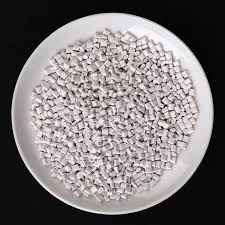The Chemicals Used in Water Treatment
Water treatment is a crucial process that ensures safe drinking water and helps maintain environmental health. It involves various physical, chemical, and biological processes aimed at removing contaminants from water. Among these processes, the use of chemical agents plays a vital role in disinfecting, coagulating, and purifying water. In this article, we will discuss the primary chemicals used in water treatment and their specific functions.
Coagulants
One of the first steps in water treatment is coagulation, where coagulants are added to help remove suspended particles. Common coagulants include aluminum sulfate (alum), ferric sulfate, and polyaluminium chloride. These chemicals work by neutralizing the charges on suspended particles, allowing them to clump together into larger aggregates known as flocs. As flocs form, they become heavy enough to settle out of the water during the sedimentation process, significantly reducing turbidity.
Flocculants
While coagulants help to form flocs, flocculants enhance the process by further agglomerating the smaller flocs into larger ones. These are often polymer-based chemicals, such as polyacrylamides. They improve the efficiency of sedimentation and filtration processes by ensuring that the suspended solids are effectively removed from the water column.
Disinfectants
Disinfection is another critical phase in water treatment, as it aims to eliminate pathogens that can cause waterborne diseases. Chlorine is the most common disinfectant used in water treatment plants due to its effectiveness, affordability, and residual disinfecting properties. Other disinfectants include chloramines (chlorine combined with ammonia), ozone, and ultraviolet (UV) light. Ozone, while highly effective at inactivating bacteria and viruses, has a short residual effect, meaning it cannot protect water supplies after treatment. UV light, on the other hand, inactivates microorganisms without adding any chemical residues, making it an environmentally friendly option.
pH Adjusters
what are the chemical used in water treatment

The pH level of water is a critical factor that can affect the solubility and mobility of various contaminants. In order to optimize the efficiency of coagulation and disinfection processes, water treatment facilities often use pH adjusters like lime (calcium hydroxide), sulfuric acid, or sodium hydroxide. These chemicals help maintain the pH within a desirable range for effective treatment and minimize corrosion of pipes and equipment.
Corrosion Inhibitors
Corrosion of pipes and infrastructure is a significant concern in water treatment and distribution systems. To protect against corrosion, chemicals such as phosphates and silicates are commonly used as corrosion inhibitors. They create a protective layer on the surfaces of pipes, thereby preventing the leaching of heavy metals into the water supply and minimizing infrastructure deterioration.
Dechlorination Agents
After chlorination, the residual chlorine must often be removed before the water can be delivered to consumers, as high levels of chlorine can be harmful. Dechlorination agents, such as sodium bisulfite or activated carbon, are utilized to neutralize or adsorb any residual chlorine, ensuring that the final water product is safe for consumption.
Nutrients for Biological Treatment
In some treatment processes, particularly in advanced wastewater treatment, nutrients such as nitrogen and phosphorus may be added to facilitate biological treatment. These nutrients support the growth of beneficial microorganisms that break down organic matter and other pollutants, aiding in the overall purification of water.
Conclusion
The use of chemicals in water treatment is essential for ensuring the safety and quality of drinking water. From coagulants and disinfectants to pH adjusters and corrosion inhibitors, each chemical has a specific role that contributes to the effective removal of contaminants. As we continue to face challenges related to water quality and availability, advancements in water treatment technologies and chemical applications will be paramount in safeguarding public health and maintaining environmental sustainability.

